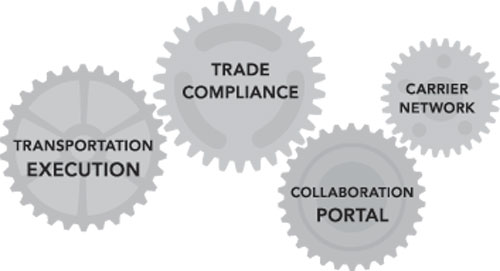The following column was taken from the recent SCDigest Letter on Transportation Management. An electronic copy of that Letter, plus a wealth of other resources can be found at our Transportation Management resources page.
If the gears inside your car’s transmission don’t mesh, you can rev the engine all you want, you’re still not going to get anywhere. The same is true of the four gears that drive your global transportation – if they don’t mesh, or if you’re missing a gear, your business is going nowhere.
What are the four gears and how do they come together? First you have to understand that all business today is global, whether you import raw materials and goods or export products, or both. How efficiently you move those goods while meeting international regulations determines the winners and losers. There are four integrated technologies that make this happen.
Transportation Execution – planning and executing an optimized physical movement of goods across all domestic and international legs of the journey.
Trade Compliance – leveraging preferential trade agreements, tariffs, duties, denied party screenings and other regulations to optimize the time and costs of moving goods across international borders.
Carrier Network – a pre-configured network of international carriers who can execute your movement of goods in global markets while minimizing on-boarding costs and the tools to manage interaction and settlement activities.
Visibility/Collaboration Portal – a single source of communication and visibility across all parties relevant to the shipment, including suppliers, carriers and enterprise personnel. The problem is these processes and technologies in the past have mostly been handled in silos – different departments, different technologies, different objectives. Without these four functions tightly integrated, your shipments will be slower, riskier, and more costly.

For example, if you don’t have visibility across all functions, how can you calculate the fully-landed cost? How can you select the lowest cost option while ensuring compliance?
The answer is simple – you have to get out of the silos. You need a unified approach backed by integrated solutions that can optimize movements, leverage international agreements, ensure compliance and provide visibility to all parties involved. When you can get these gears to mesh, your business will really start to go places. That’s what a comprehensive, integrated TMS solution can do for you.
|